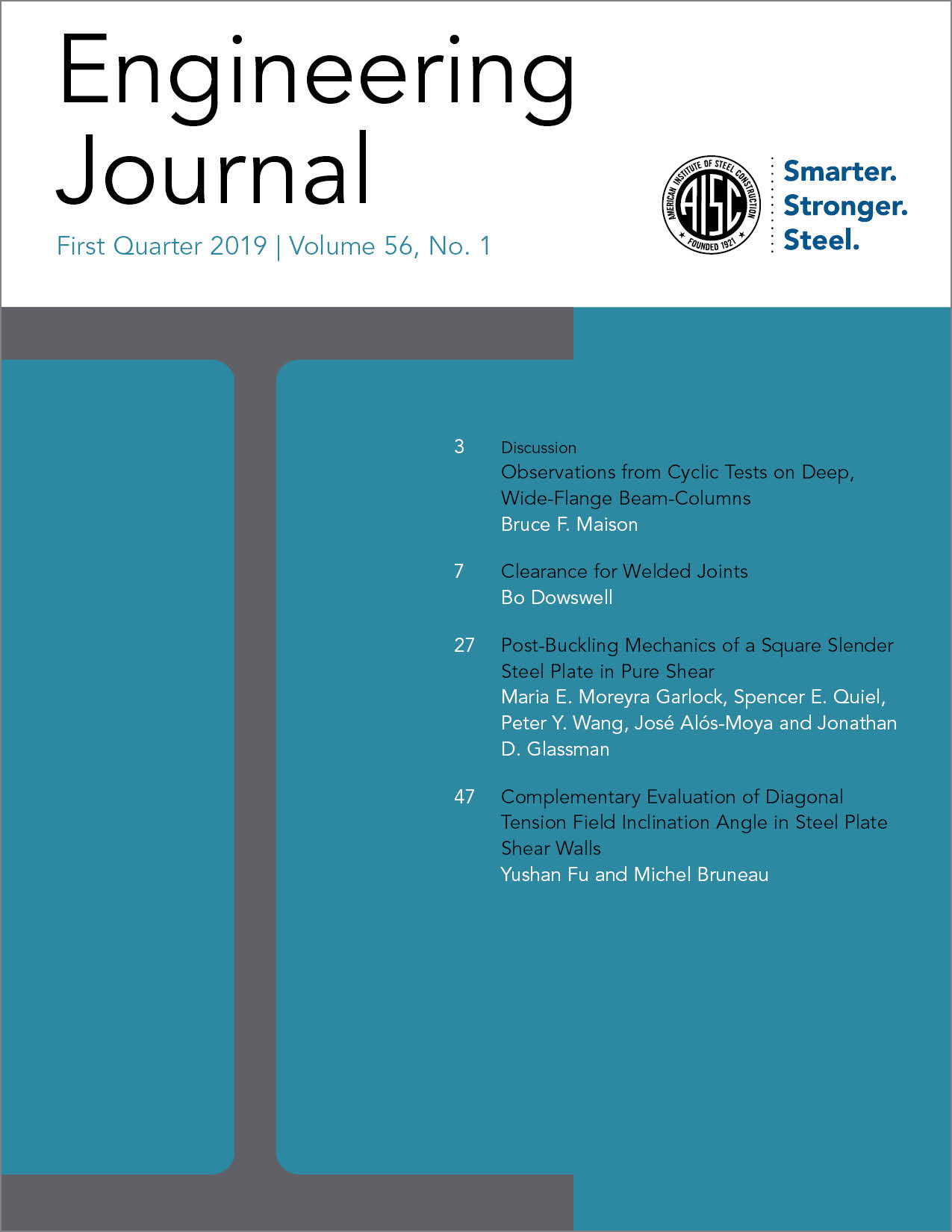Clearance for Welded Joints
DOI:
https://doi.org/10.62913/engj.v56i1.1143Keywords:
welded joints, FCAW, GMAW, doubler plates, weld clearanceAbstract
Inadequate clearance can affect weld quality and efficiency. In extreme cases, obstructions may cause a lack of fusion between the base metal and the weld metal, causing a reduction in strength. Although flux cored arc welding (FCAW) and gas metal arc welding (GMAW) have replaced shielded metal arc welding (SMAW) as the primary fabrication processes for structural steel fabrication, existing clearance recommendations are based on the SMAW process. Because the geometry of a FCAW or GMAW welding gun is much different from that of a SMAW electrode, the historic values recommended for the SMAW process may not apply to FCAW and GMAW. Experimental specimens were fabricated with the FCAW process to determine practical limits on connection geometry for welding joints with limited access. Each specimen was evaluated by sectioning and etching the weld at two locations along the length. Two weld clearance issues are addressed: (1) fillet welding near obstructions and (2) doubler plate welds.

